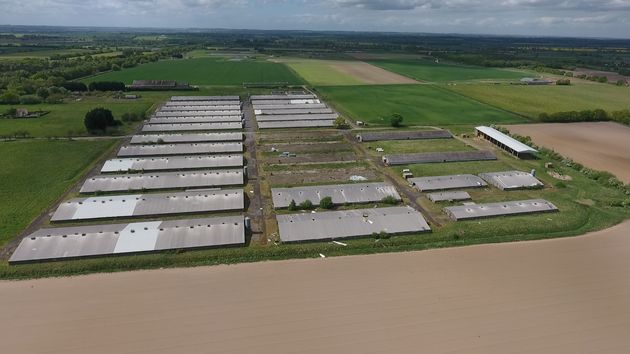
What is ammonia and how is it harmful?
Ammonia is an invisible gas with a distinct smell. It forms when nitrogen combines with hydrogen under certain conditions.
While it’s commonly used as a fertiliser, ammonia is also used across a range of industries. It can purify water, serves as an ingredient in many cleaning products and can be used to dye or print textiles. It even has thermodynamic properties useful for making industrial refrigerators.
However, ammonia is also a major pollutant.
Where do ammonia emissions come from?
Some ammonia emissions come from certain petrol vehicles and specific types of industrial machinery. But in the UK, the vast majority of it (nearly 90%) is produced by farms, primarily through fertilisers and livestock.
When substances containing ammonia – such as manure, urine and fertilisers – are applied to fields or stored in piles or open slurry pits, they release ammonia gas into the air through evaporation.
Once in the atmosphere, ammonia can react with other compounds and form potentially harmful pollutants. These emissions go on to land on different surfaces, affecting ecosystems and water quality.
What impact do these emissions have on our environment?
Despite ammonia’s many uses, its emissions can have a deeply negative effect on biodiversity and the natural environment. When we talk about ammonia pollution, it’s impossible not to mention nitrogen, because ammonia is a compound that consists of nitrogen and hydrogen. As such, it is among the main sources of nitrogen pollution.
Nitrogen is a vital nutrient for life on Earth. But when nitrogen compounds, including ammonia, seep into soil and water in large amounts, it can have catastrophic effects on ecosystems. Plants that thrive in high-nitrogen environments quickly choke out other species, particularly sensitive lichens and mosses.
In nitrogen-contaminated water, algae can multiply faster than usual, blocking sunlight for plants lower down. When this algae dies off and decomposes, the process consumes oxygen in the water, suffocating aquatic life.
The knock-on effects can be devastating for biodiversity, and at the extreme end can damage habitats.
 Nearly 90% of the UK’s ammonia emissions come from the agricultural sector
Nearly 90% of the UK’s ammonia emissions come from the agricultural sector
Can ammonia emissions harm us?
Yes. Breathing in ammonia can cause a burning sensation, and high concentrations can even be fatal.
But it doesn’t need to be direct exposure to cause harm. In the air, ammonia mixes with other gases including sulphur dioxide and nitrogen dioxide. When this happens, tiny particles called fine particulate matter are created that contain ammonium.
Breathing in these tiny particles can harm your health. They’re especially bad for your heart and lungs, and can lead to heart attacks, strokes, chronic obstructive pulmonary diseases, asthma and even lung cancer.
What can be done to reduce emissions?
The phasing out of diesel cars in the UK over the next decade may reduce gases like sulphur dioxide and nitrogen oxide in cities. This could lead to less ammonia getting into our environment through the air.
But, given the proportion of ammonia emissions that comes from agriculture, UK farmers are being encouraged to adopt new measures to help the government reduce emissions by 16% by 2030 compared with 2005.
For this to happen, industrial-scale farms must change the way they store and spread manure and nitrogen-based fertilisers, as well as how they house animals. Keeping manure piles and slurry pits covered, for example, keeps ammonia from evaporating into the air.
Reporter: Katia Pirnak
Environment editor: Robert Soutar
Deputy editors: Chrissie Giles and Katie Mark
Editor: Franz Wild
Production editors: Alex Hess and Emily Goddard
Fact checker: Frankie Goodway
Impact producer: Grace Murray
Our Food and Farming project is partly funded by the Montpelier Foundation and partly by the Hollick Family Foundation. None of our funders have any influence over our editorial decisions or output
-
Area:
-
Subject:




